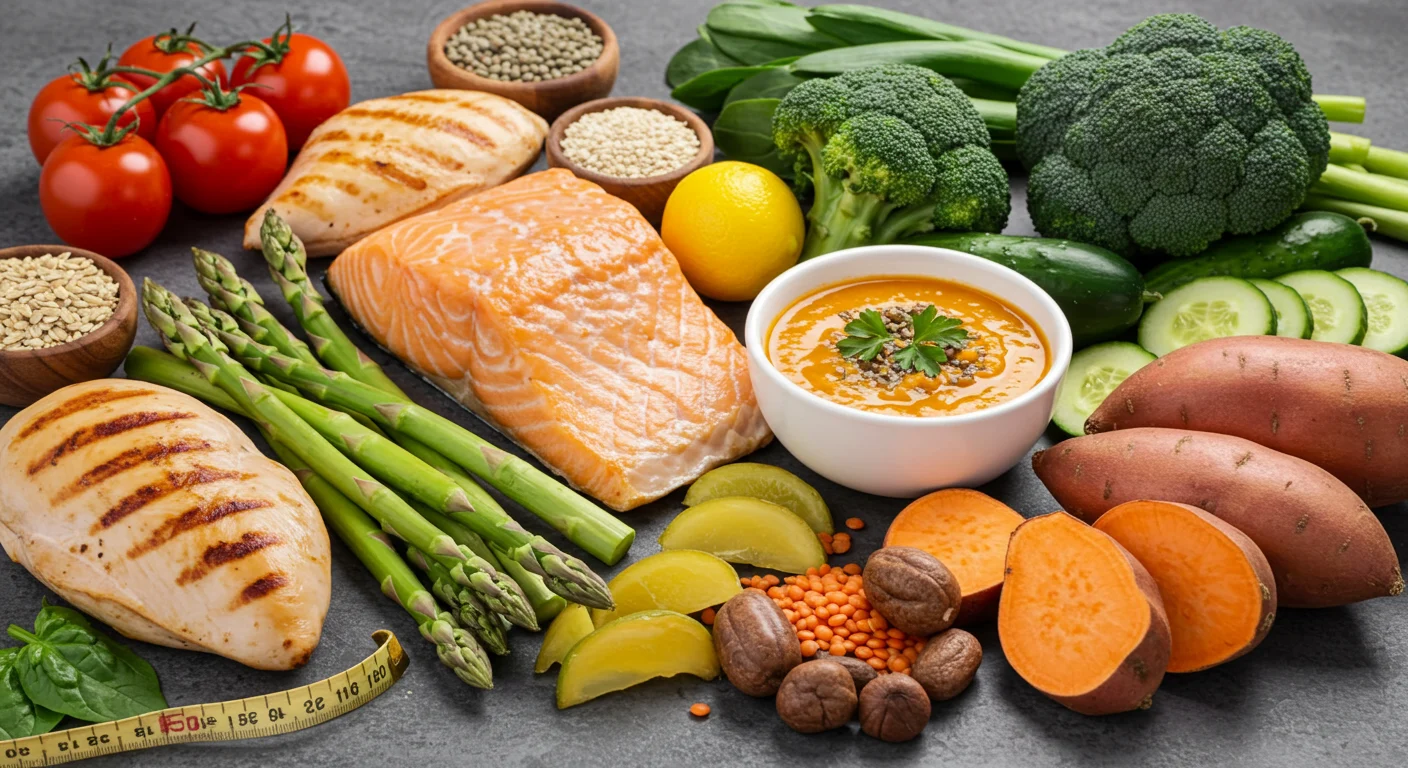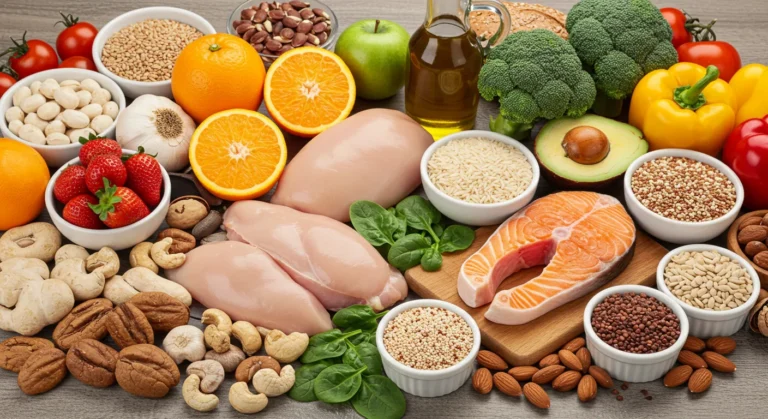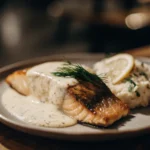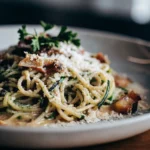and Why Should You Use It?
High blood pressure runs in my family, but I never thought it would hit me as early as it did. When my doctor sat me down and told me I had hypertension and needed to seriously cut my sodium, I knew I had to make changes—but I didn’t want to live off bland salads or give up everything I loved. That’s when I found the DASH diet.
If you’re looking for a balanced, heart-smart way to eat that can help with weight loss and overall health, the DASH diet might be exactly what you need. In this post, we’ll walk through what the DASH diet is, why it works, and how you can start following it without feeling like you’re on a restrictive plan.
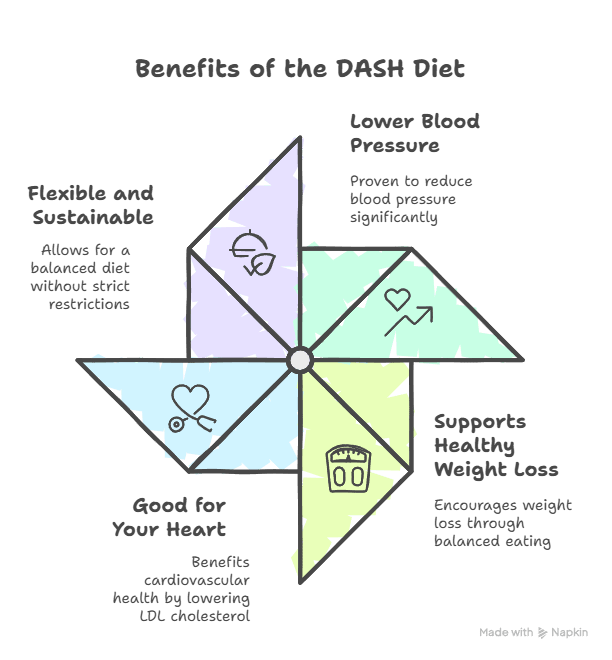
What Is the DASH Diet?
The DASH diet stands for Dietary Approaches to Stop Hypertension. It was developed through research funded by the National Heart, Lung, and Blood Institute to help people lower their blood pressure naturally—without medication, or at least with less of it.
But this isn’t just a plan for people with high blood pressure. It’s also great for weight loss, improving heart health, and reducing the risk of diabetes and stroke. Healthline calls it one of the healthiest diets out there—and for good reason.
The Basics
At its core, the DASH diet focuses on:
- Fruits and vegetables
- Whole grains
- Lean proteins like poultry, fish, and plant-based sources
- Low-fat dairy
- Nuts, seeds, and legumes
And it limits:
- Sodium
- Saturated fat and trans fats
- Added sugars
- Red meat
You’re not counting calories or carbs. You’re just choosing the right kinds of foods and watching your portions.
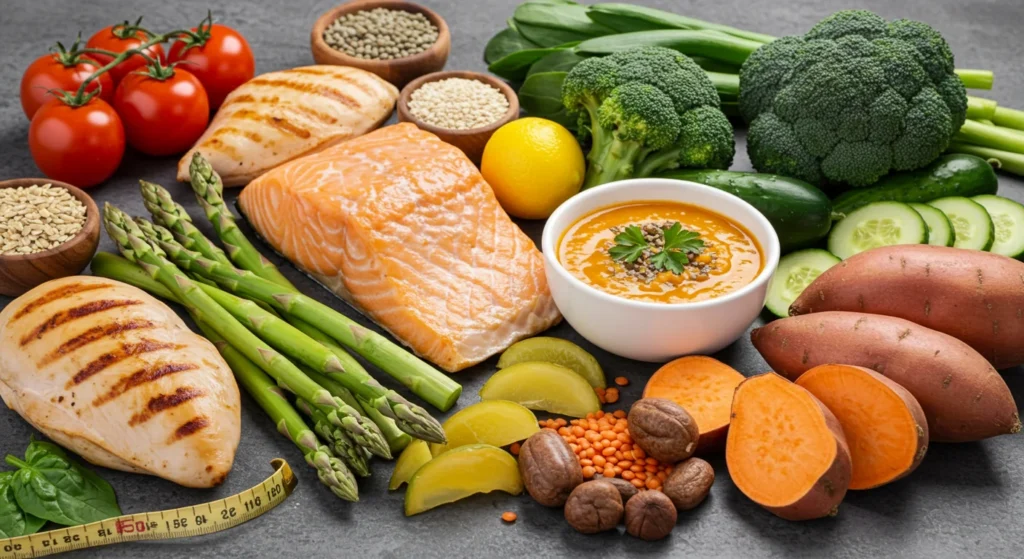
Why Should You Try the DASH Diet?
Let’s be real—most diets feel like punishment. The DASH diet isn’t one of them. It’s flexible, realistic, and sustainable. Whether you’re looking to drop a few pounds, protect your heart, or just clean up your eating habits, this plan fits.
Here’s why so many people (including me) swear by it:
1. It’s Proven to Lower Blood Pressure
This is what it was built for. According to the National Heart, Lung, and Blood Institute, the DASH diet can lower systolic blood pressure by 8–14 points—comparable to some medications.
When I started cutting back on sodium and upping my potassium-rich foods like bananas and sweet potatoes, my numbers dropped. No magic pills, no drastic measures.
2. It Supports Healthy Weight Loss
By focusing on fiber-rich foods and lean proteins, the DASH diet helps you feel full without loading up on calories. I noticed I was eating more but weighing less.
3. It’s Good for Your Heart
Eating this way doesn’t just help your blood pressure. It can lower LDL cholesterol (the bad kind) and reduce the risk of heart disease. The Heart and Stroke Foundation backs it for its overall cardiovascular benefits.
4. You Don’t Have to Give Up Everything
There’s no need to eliminate carbs or go keto-level strict. The DASH diet is about balance, not deprivation. You can still enjoy whole-grain pasta, fruit, and even the occasional dessert (yes, really).
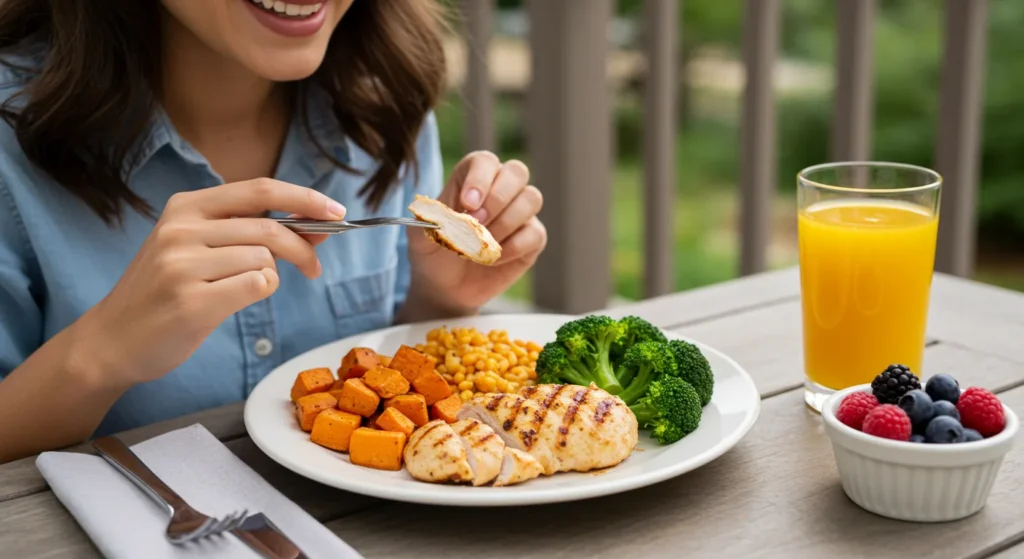
DASH Diet Guidelines at a Glance
Here’s a quick breakdown of what a typical day looks like on a 2,000-calorie DASH diet:
| Food Group | Daily Servings | Examples |
| Grains | 6–8 | Brown rice, quinoa, whole-grain bread |
| Vegetables | 4–5 | Leafy greens, broccoli, carrots |
| Fruits | 4–5 | Berries, apples, bananas |
| Low-fat dairy | 2–3 | Skim milk, yogurt, low-fat cheese |
| Lean protein | ≤6 ounces | Chicken, fish, tofu |
| Fats and oils | 2–3 | Olive oil, avocado oil |
| Nuts, seeds, legumes | 4–5 per week | Almonds, lentils, sunflower seeds |
| Sweets | ≤5 per week | Dark chocolate, low-sugar desserts |
Learn more about these recommendations at the Wikipedia DASH diet page.
Cooking and Eating the DASH Way
Switching to the DASH diet doesn’t mean you have to overhaul everything overnight. These small changes helped me stay on track without feeling overwhelmed.
Flavor Without the Salt
This one hit close to home. When I was told I needed to reduce my sodium, I thought, “So food just won’t taste good anymore?”
Not true.
- I started using fresh herbs, citrus juice, garlic, onion, and vinegar to season meals.
- I ditched the salt shaker and used spice blends (without added sodium) instead.
- Slowly, my taste buds adjusted—and now salty foods taste too salty.
Cooking Methods That Matter
Grilling, baking, roasting, and steaming became my go-to methods. I also stopped deep frying and started meal prepping to avoid reaching for processed foods full of hidden sodium.
Smarter Swaps
- Swapped white rice for quinoa
- Used Greek yogurt instead of sour cream
- Switched from red meat to lean chicken or salmon
- Traded canned soups for homemade veggie soups (no salt added)
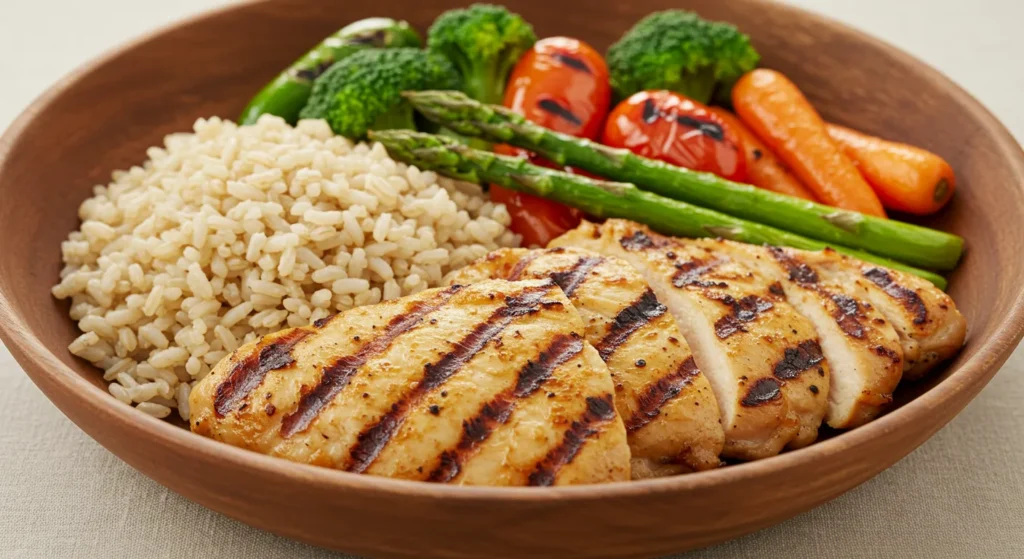
Sample Meals on the DASH Diet
Here’s what a day of DASH-style eating might look like:
Breakfast
- Low-fat Greek yogurt with berries and a handful of walnuts
- Slice of whole-grain toast with almond butter
Lunch
- Grilled chicken salad with spinach, cucumber, cherry tomatoes, and a drizzle of olive oil and lemon juice
- A pear on the side
Dinner
- Baked salmon with garlic-roasted broccoli and a half-cup of brown rice
- A small bowl of mixed fruit for dessert
Snacks
- Unsalted almonds
- Baby carrots with hummus
- Low-fat string cheese
For more ideas and easy recipes, check out this simple DASH diet meal plan.
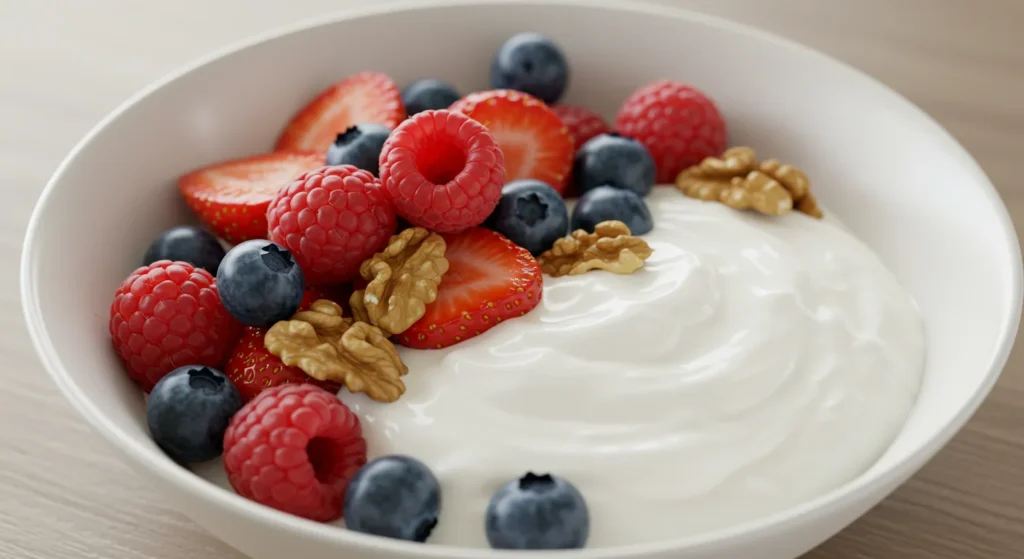
Tips for Starting the DASH Diet
If you’re thinking about trying the DASH approach, here are some things I wish I knew when I started:
1. Don’t Stress About Perfection
You don’t have to follow it to the letter on day one. Start by adding more veggies to your meals or switching to whole grains. Every little bit helps.
2. Watch for Hidden Sodium
One of the biggest surprises was how much sodium was hiding in things I thought were “healthy,” like salad dressings and whole wheat bread. Check labels—you might be shocked.
3. Prep Ahead
Having pre-cut veggies, cooked quinoa, and grilled chicken in the fridge made it easier to throw together meals and avoid ordering takeout.
4. Go Slow on Fiber
If you’re not used to eating lots of whole grains, fruits, and veggies, your digestive system might need time to adjust. Gradually increase your intake to avoid bloating.

Is the DASH Diet Right for You?
If you’re dealing with high blood pressure, trying to lose weight, or just want a more balanced approach to eating, the DASH diet is definitely worth considering.
It worked for me—not just because it helped lower my blood pressure, but because it didn’t feel like a punishment. I could still enjoy my food. I didn’t have to count every bite. And I genuinely felt better.
Of course, everyone’s body and needs are different. If you have any medical conditions, always talk to your doctor or a dietitian before making big changes.
Final Thoughts
The DASH diet isn’t trendy or flashy. It won’t promise overnight transformation. But what it does offer is something more powerful—sustainable, science-backed habits that can improve your health and the way you feel every day.
Whether you’re looking to manage blood pressure, eat cleaner, or lose some weight, this approach gives you a foundation to build on. And the best part? It’s flexible, flavorful, and realistic.
Ready to give it a try? Start small. Try swapping your usual lunch for a DASH-friendly one. Stock your kitchen with fresh produce and whole grains. Experiment with herbs and spices instead of salt.
You might be surprised how easy it becomes—and how good you feel.

